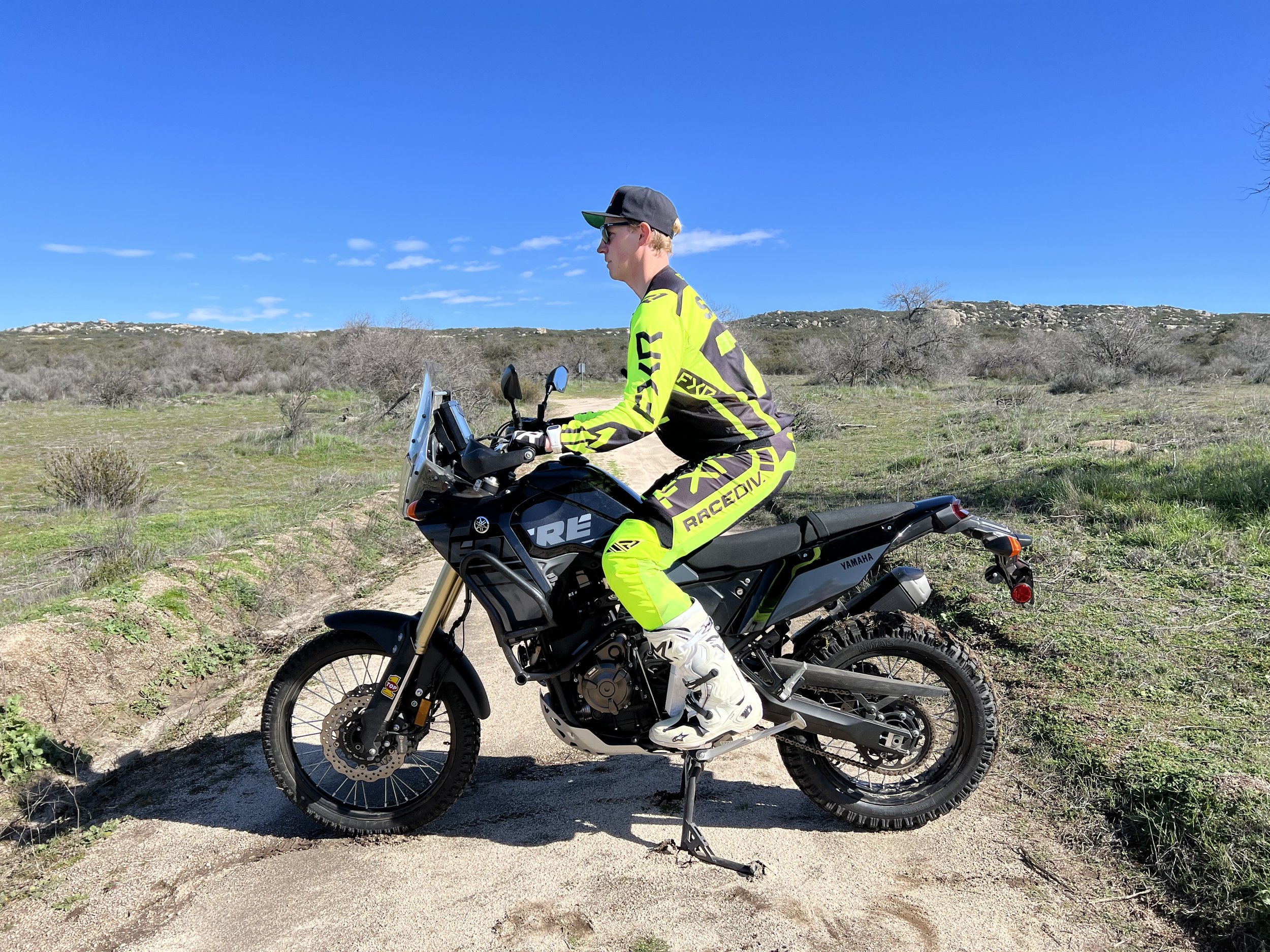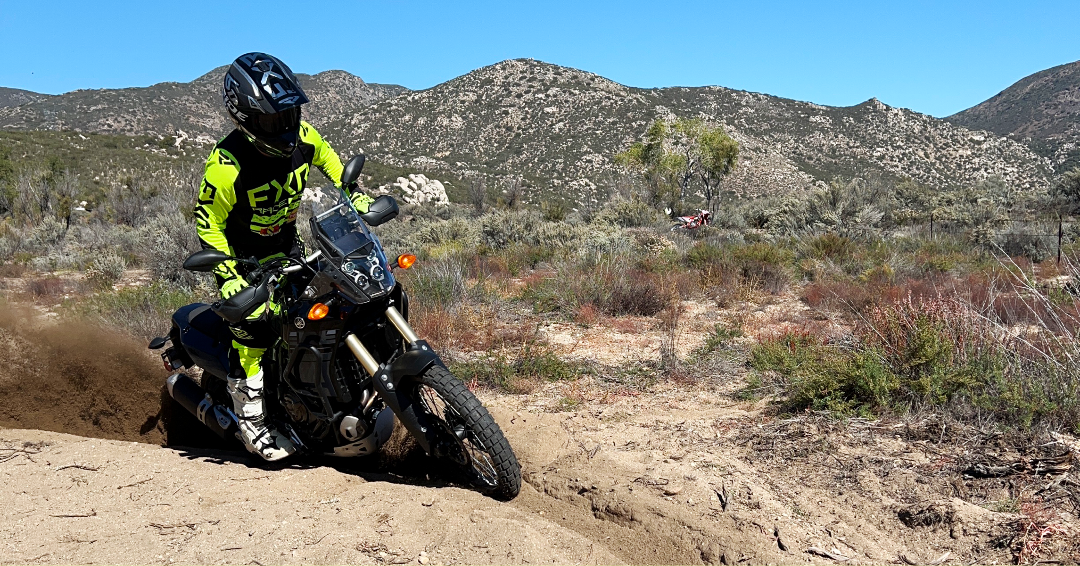In today’s blog we are taking a closer look at the 3 BIGGEST and most common mistakes we see in adventure motorcycle riders, especially when they are new to riding off road. At our Adventure Motorcycle classes we get a great variety of riders from level 2 and level 3 riders that are preparing for the BMW GS Trophy or the KTM Adventure Rally to riders that have minimal off road experience looking to learn the fundamentals and build confidence in our level 1 class.
Over the years we realized that there are 3 very common mistakes that even riders with more experience make. All three have a major impact on the control of the motorcycle and the overall riding experience. Often times we see riders with years of adventure motorcycle riding experience get away with poor form but they really wear themselves out and are on the edge of going down a lot. All 3 mistakes are easy to correct ones you know what you are doing wrong and what you need to focus on to fix them, so her we are breaking them down.
THESE ARE THE 3 BIGGEST ADVENTURE MOTORCYCLE OFF ROAD MISTAKES
Standing Position
A lot of riders tend to stand on their motorcycle in a very compromised position. They are trying to “squeeze” the bike with their knees so they bent their knees, push them forward, which then moves the hips forward. From their they find themselves too far in the front of the bike, so their upper body is leaned back and their elbows are tucked in.
The fix starts at your first point of contact with your ADV bike at the foot peg. The foot peg is your first point of contact and it is also the lowest point of contact so you will have the biggest impact on the overall control of your motorcycle there. Make sure to ride on the balls of your feet and turn your feet into the bike. There should be no gap between your boot and the frame. This position will allow you to drop your heels, which moves your hips further back on the bike. Your head and chest stay forward with your elbows up and slightly bent. Now in this position you are covering 80% of your bike and can use the leverage of your legs to gain control. Stay flexible in your ankles and don’t bent you knees more than 10 degrees. Let the bike’s suspension do it’s job and absorb bumps and waves in your ankles. Elbows are slightly flexing so you are able to work with the front end of the bike.
2. Inconsistent On The Throttle
This is a mistake that we see a lot of adventure motorcycle riders make especially in soft terrain. You want to make sure that you are consistent with your throttle delivery. Every time you are getting off the throttle the weight of the bike shits towards the front end of the motorcycle which makes riding softer off road terrain especially tricky. By staying consistent on the throttle you will stabalize your ADV bike and you can start building some momentum. At this point we always refer back to point 1 and controlling the motorcycle with your ankles and lower legs. Once you are ready to slow down or come to a stop, just make sure to decelerate slowly. Don’t just chop the throttle but roll it back slowly so the weight transfer to the front wheel is not so abrupt. The best way to practice this off road riding technique is in a nice open sandy area where you have a little bit of space to make mistakes.
3. Taking Your Feet OFF The Foot Pegs
This is a very common mistake that comes from a lack of control of the motorcycle at your first point of contact (see mistake 1) which leads to a lack of confidence when the motorcycle starts moving around underneath you. Taking both of your feet of the foot peg means giving up the majority of the control of your motorcycle. You are now trying to handle a 450 lbs weight that is moving around underneath you just by holding on with your arms, which is pretty much impossible. As I’ve explained before the only time you are really in contact with your bike is from your foot peg up to your seat and then at the very top of the motorcycle you get in touch again at the handlebars. Adventure motorcycles are very hard to control from the top down so the more you can guide the ADV bike with your legs the easier it will be for you to ride off road. It’s very important to get comfortable with the bike moving around underneath you and keeping your feet on the pegs in order to keep control of your ride.
So these are the 3 BIGGEST mistakes that we see out of Adventure riders that come through our training. If you are interested in how to fix them with a couple very basic exercises, please watch the video below where we break the mistakes down and explain how you can become a better off road rider.




